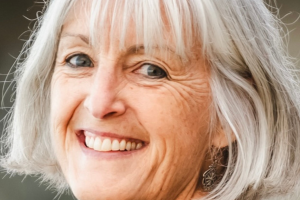
What was the driving force behind you becoming a celebrant?
I was brought up with a convent school education and was always that kid who did the readings at Mass. Like many Catholic girls, when I was 11, I wanted to be a nun. That disappeared as I moved through my teens but that spiritual element remained with me. When I was 40, my grandmother died. Mum and I worked with the celebrant, and I thought “I’d like to do that” and completed Mary Hancock’s Certificate in Celebrant Studies the following year. I started doing a few ceremonies alongside a full-time corporate career around 2008.
What involvement do you have/have had with CANZ at a branch or national level?
My main role has been as a local connector north of Auckland for a number of years. When Helen Rutledge moved into the area, we clicked and continued to co-host local celebrant get-togethers, an annual community baby loss ceremony, and last year ran a series of Death Cafes at the local library.
Tell us about the ceremonies you perform.
My main area of interest is around end-of-life - funerals, memorials, ashes interments, but I also do registry ceremonies (I was part of the pilot team for BDM back in 2018), marriages, and the odd transition ceremony. I think there is a lot more scope for transition ceremonies. Last year I wrote my own 60th birthday ceremony in circle, which my friend Kathrine Fraser fine-tuned and hosted for me. (You can read all about it here.)
What are the most enjoyable things about being a celebrant?
Co-creating unique ceremonies with clients who want something a bit different, and seeing it all come together. Any kind of ceremony where the clients are really committed to the occasion, no matter how big or small. I have done some beautiful registry ceremonies. It’s really about the people involved.
What are some of the hardest parts of the job?
Being asked to do a funeral with very little lead time.
What was the most memorable ceremony you have performed?
Last year I led a funeral for a friend of a friend who had ended her own life. I worked closely with my friend, her friend’s brother and another close friend and the four of us really gelled, sparking off each other. The ceremony was everything they hoped it would be. It was my first suicide and I was really proud that I held it together when there was so much emotion in the room. I never could have held space in that way 10 years ago, before working through some of my own trauma.
What does your typical day look like?
I always have projects on the go. I teach two papers at The Celebrant School, am involved with Death Without Debt where I have two workshops and a hospice talk coming up, and I volunteer for The Hope Shop, a local pre-loved clothing boutique that supports wrap-around services for at risk youth in our local community. Most days would have elements of those in them.
What advice do you have for someone new to the industry?
Do some training to develop your ceremony design skills. Do some personal development to develop your connection skills. Explore what spirituality means to you. Most of all listen. We have two ears and one mouth for a reason.
How do you like to relax?
I play mah jong, pickle ball, do line dancing and walk with my sister on Orewa Beach once a week. I enjoy catching up with friends and family, or meeting new people in my networks for a coffee. I also love travelling and always have a trip in the pipeline.
You can find out more about Kelly on her website.
[IMAGE: Danni at Photo Carnival, Whangaparāoa]
